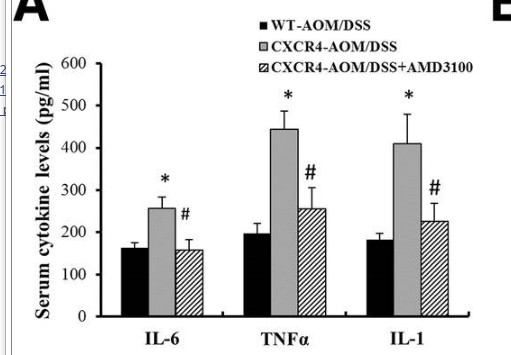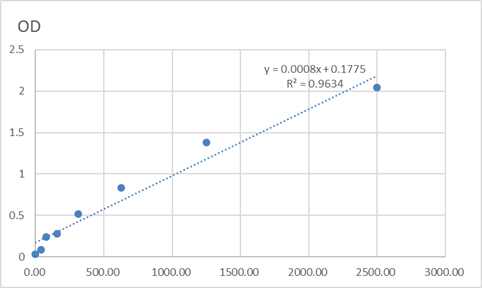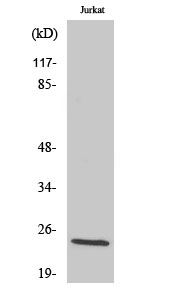Cleaved-KLK8 (V33) Cell-Based Colorimetric ELISA Kit
- Catalog No.:KA3969C
- Applications:ELISA
- Reactivity:Human
- Gene Name:
- KLK8
- Human Gene Id:
- 11202
- Human Swiss Prot No:
- O60259
- Mouse Swiss Prot No:
- Q61955
- Storage Stability:
- 2-8°C/6 months
- Other Name:
- Kallikrein-8 (hK8) (EC 3.4.21.118) (Neuropsin) (NP) (Ovasin) (Serine protease 19) (Serine protease TADG-14) (Tumor-associated differentially expressed gene 14 protein)
- Detection Method:
- Colorimetric
- Background:
- catalytic activity:Cleavage of amide substrates following the basic amino acids Arg or Lys at the P1 position, with a preference for Arg over Lys.,enzyme regulation:Inhibited by a range of serine protease inhibitors including antipain, aprotinin, leupeptin, benzamidine and soybean trypsin inhibitor.,function:Serine protease which is capable of degrading a number of proteins such as casein, fibrinogen, kininogen, fibronectin and collagen type IV. Also cleaves L1CAM in response to increased neural activity. Induces neurite outgrowth and fasciculation of cultured hippocampal neurons. Plays a role in the formation and maturation of orphan and small synaptic boutons in the Schaffer-collateral pathway, regulates Schaffer-collateral long-term potentiation in the hippocampus and is required for memory acquisition and synaptic plasticity. Involved in skin desquamation and keratinocyte proliferation. Plays a role in the secondary phase of pathogenesis following spinal cord injury.,miscellaneous:Expressed at high levels in serum, ascites fluid and tumor cytosol of advanced stage ovarian cancer patients and may serve as a marker of ovarian cancer.,similarity:Belongs to the peptidase S1 family. Kallikrein subfamily.,similarity:Contains 1 peptidase S1 domain.,tissue specificity:Isoform 1 is predominantly expressed in the pancreas while isoform 2 is expressed in adult brain and hippocampus. Both forms are also found in fetal brain and placenta. Detected in salivary gland, uterus, thymus, breast, testis and kidney but not in spleen, liver, lung or normal ovarian tissue. Displays an 11.5-fold increase in Alzheimer disease hippocampus compared to controls and is overexpressed in some ovarian carcinomas. Expressed at low levels in normal skin while high levels are found in psoriasis vulgaris, seborrheic keratosis, lichen planus and squamous cell carcinoma skin samples.,
- Function:
- cell morphogenesis, proteolysis, cell-cell signaling, synaptic transmission, behavior, learning or memory, memory, cell death, cell proliferation, response to wounding, negative regulation of cell development, regulation of cell morphogenesis involved in differentiation, regulation of neuron projection development, negative regulation of neuron projection development, death, transmission of nerve impulse, regulation of cell morphogenesis, cell projection organization, neuron differentiation, neuron projection development, regulation of cell projection organization,negative regulation of cell projection organization, regulation of myelination, negative regulation of myelination,regulation of neurological system process, negative regulation of neurological system process, regulation of response to external stimulus, negative regulation of response to external stimulus, regulation of homeos
- Subcellular Location:
- Secreted . Cytoplasm . Shows a cytoplasmic distribution in the keratinocytes.
- Expression:
- Isoform 1 is predominantly expressed in the pancreas. Isoform 2 is expressed in adult brain and hippocampus. Isoform 1 and isoform 2 are found in fetal brain and placenta. Detected in salivary gland, uterus, thymus, breast, testis and kidney but not in spleen, liver, lung or normal ovarian tissue. Displays an 11.5-fold increase in Alzheimer disease hippocampus compared to controls and is overexpressed in some ovarian carcinomas. Expressed at low levels in normal skin while high levels are found in psoriasis vulgaris, seborrheic keratosis, lichen planus and squamous cell carcinoma skin samples. Expressed in the keratinocytes.
- June 19-2018
- WESTERN IMMUNOBLOTTING PROTOCOL
- June 19-2018
- IMMUNOHISTOCHEMISTRY-PARAFFIN PROTOCOL
- June 19-2018
- IMMUNOFLUORESCENCE PROTOCOL
- September 08-2020
- FLOW-CYTOMEYRT-PROTOCOL
- May 20-2022
- Cell-Based ELISA│解您多样本WB检测之困扰
- July 13-2018
- CELL-BASED-ELISA-PROTOCOL-FOR-ACETYL-PROTEIN
- July 13-2018
- CELL-BASED-ELISA-PROTOCOL-FOR-PHOSPHO-PROTEIN
- July 13-2018
- Antibody-FAQs



